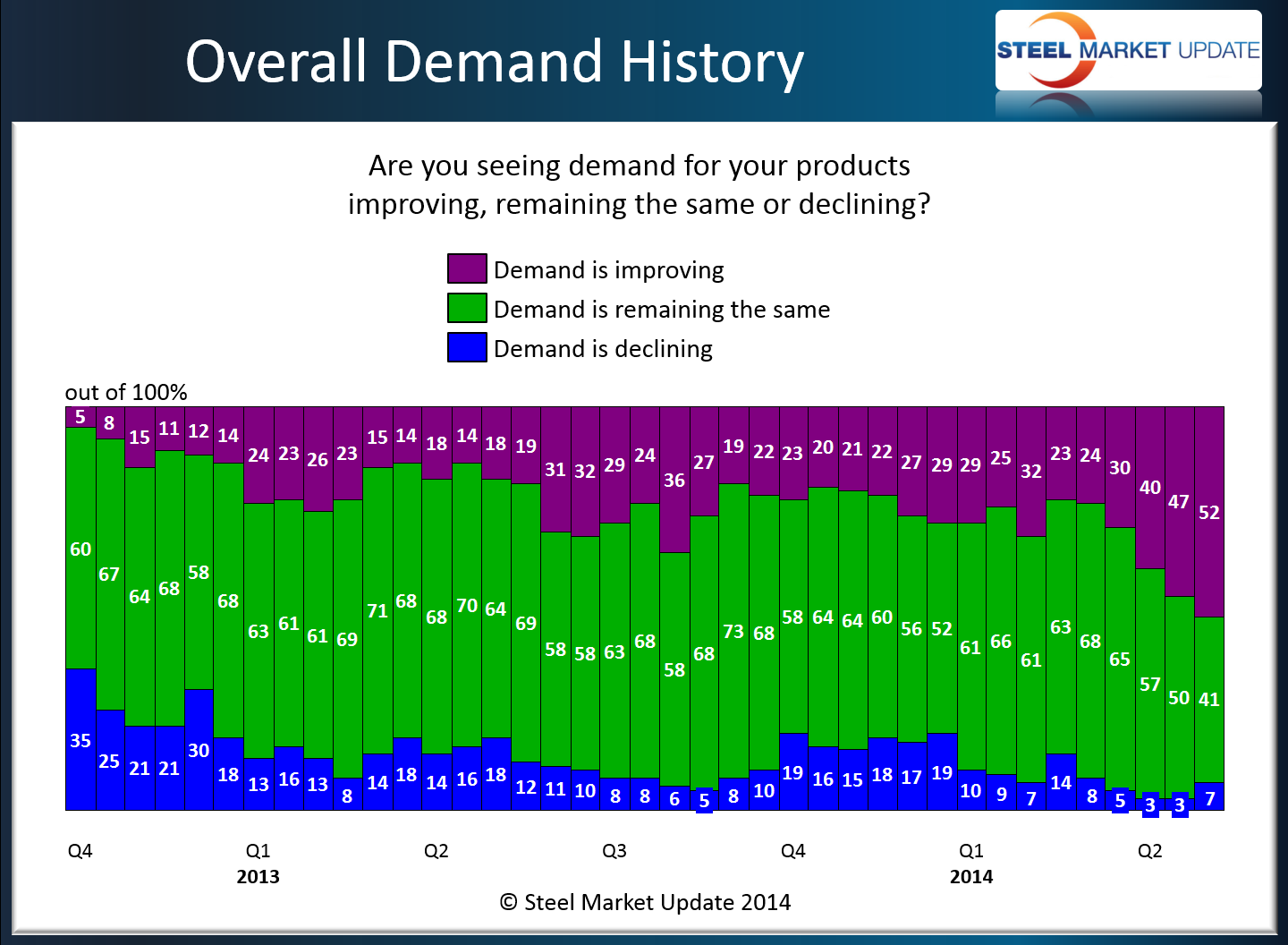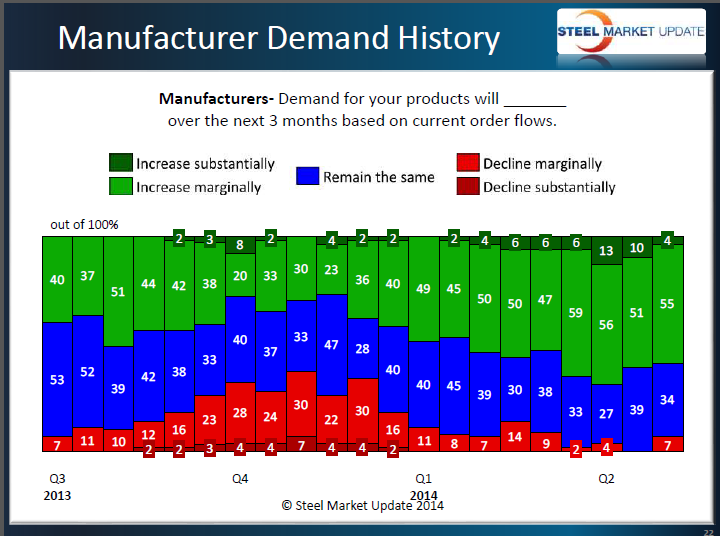SMU Data and Models

SMU Survey: Demand Growth Picking Up Steam
Written by John Packard
May 11, 2014
For the first time since Steel Market Update began surveying the flat rolled steel industry, a majority of our respondents are reporting demand as “improving.” As you can see by the timeline shown in the graphic below, the optimistic trend for demand growth began to pick up steam during late 1st Quarter 2014 and momentum has been building ever since. In the most recent survey, which was conducted this past week, 52 percent of all steel buyers and sellers of flat rolled steel responding reported demand as improving.
During the questionnaire process we split respondents into their appropriate market segment and then check to see if our overall demand results are limited to one particular segment (manufacturing or distribution). In last week’s survey we found 53 percent of service centers reporting that their end user customers are releasing more steel this year compared to last year at this time.
Manufacturing companies have been reporting better demand on their products for a number of months going tack to February 2014. Manufacturers reported demand as increasing marginally (55 percent) or increasing substantially (4 percent) while only 34 percent reported demand as remaining the same and 7 percent told SMU during the survey process that demand would declining marginally on their products over the next 3 months.
Below is a longer term view of manufacturing demand responses.
The graphics shown are part of a much larger Power Point presentation which is provided to our Premium Level members and is available to them on our website.

John Packard
Read more from John PackardLatest in SMU Data and Models

SMU’s June at a glance
A look at SMU data for the month of June.

SMU Survey: Buyers’ Sentiment rebounds from multi-year low
Both of SMU’s Steel Buyers’ Sentiment Indices edged higher this week. Current Sentiment rebounded from a near five-year low, while Future Sentiment rose to a two-month high

SMU flat-rolled market survey results now available
SMU’s latest steel buyers market survey results are now available on our website to all premium members.

SMU Survey: Sheet lead times pull back after early-June blip, plate holds
Following the uptick seen two weeks ago, lead times eased this week for all four sheet products tracked by SMU, while plate lead times held steady, according to this week’s market survey.

SMU Survey: Pricing power abruptly shifts to steel buyers
The majority of steel buyers responding to our latest market survey say domestic mills are more willing to talk price on sheet and plate products than they were earlier this month. Sheet negotiation rates rebounded across the board compared to early June, while our plate negotiation rate hit a full 100%.


